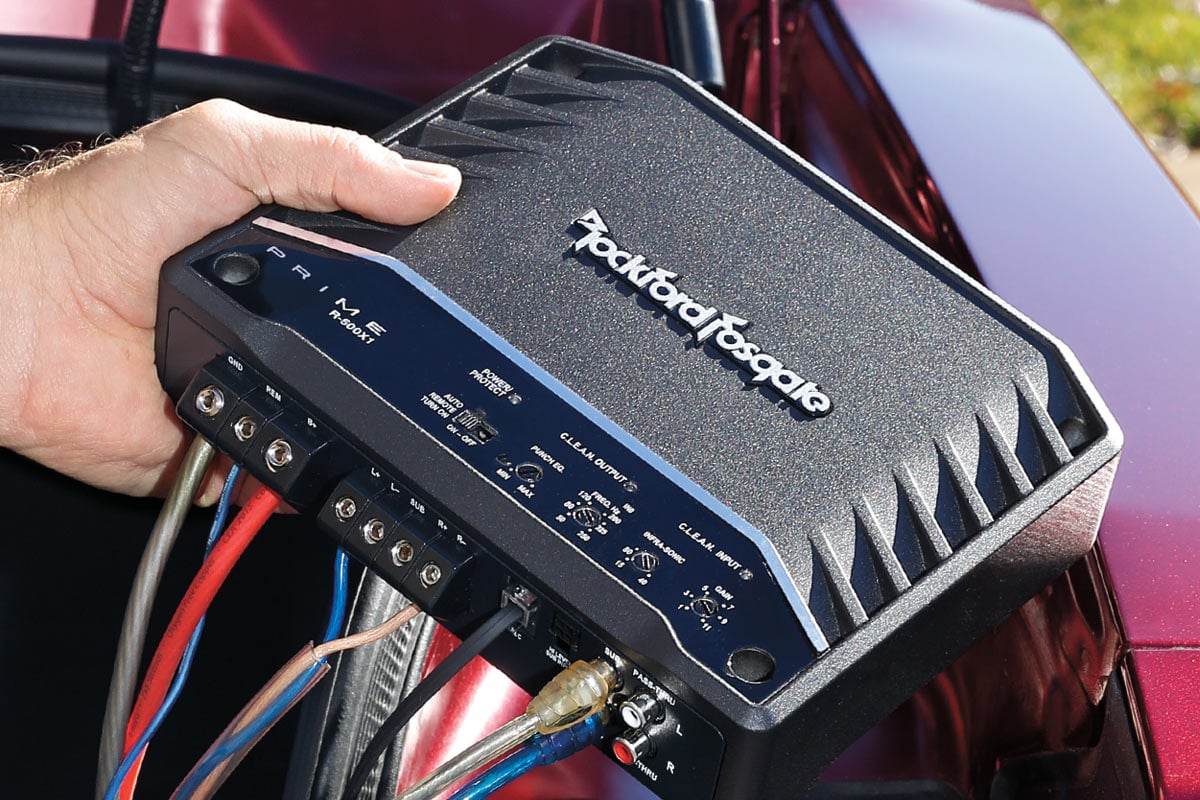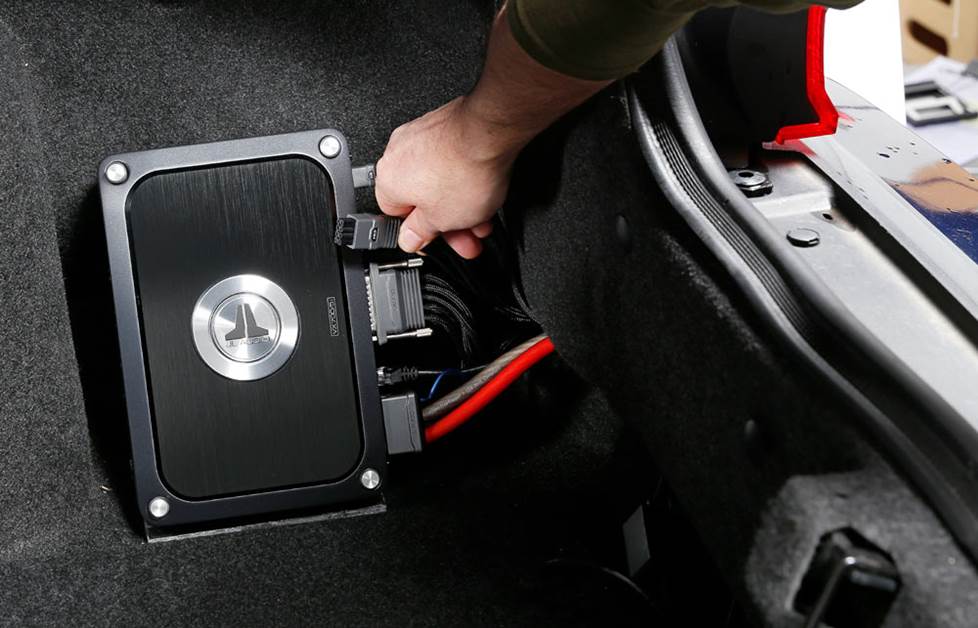
If you want clean, powerful low end from your car system, the amplifier matters more than most people think.
This guide compares 10 reliable, brand-recognizable amplifiers that are often used with subwoofers and bass rigs in 2025.
We focus on real-world performance, installation practicality, and which amp type fits common setups (mono sub rigs vs multi-channel systems).
For more background on how amplifier power affects speaker performance, see our guide on how amplifier wattage works, and check other buying guides in our Buying Guides section.
Affiliate Disclosure: AmplifierZone is reader-supported. As an Amazon Associate, we may earn commissions from qualifying purchases at no extra cost to you.
Quick comparison
| Rank | Model | Power / Role | Channel Type | Key Features | Price Range |
|---|---|---|---|---|---|
| #1 | Pioneer GM-D9701 | High power — subwoofer focus | Mono | Class-D, compact, remote bass control | ≈ $120–$200 |
| #2 | Rockford Fosgate R2-750X1 | Balanced power for subs | Mono | Prime Class-D, punchy low end | ≈ $170–$250 |
| #3 | Rockford Fosgate R500X1D | Reliable mono sub amp | Mono | Class-D efficiency, compact | ≈ $80–$160 |
| #4 | Skar Audio RP-1500.1D | High-output subwoofer amp | Mono | Remote level, MOSFET | ≈ $200–$400 |
| #5 | Taramps The Big Boss | SPL-oriented bass power | Mono | High-current design, multi-impedance | ≈ $200–$700 |
| #6 | Pioneer GM-A6704 | Flexible multi-channel option | 4-channel (bridgeable) | Bridgeable, compact, versatile | ≈ $150–$250 |
| #7 | Alpine MRV-F300 | Compact 4-ch for small systems | 4-channel | Class-D, reliable build | ≈ $150–$300 |
| #8 | JL Audio JD250/1 | High-quality mono sub amp | Mono | Precision tuning, audiophile tone | ≈ $400–$900 |
| #9 | Hifonics BG-2200.1D | Very high SPL mono amp | Mono | Super D class, bass knob | ≈ $200–$500 |
| #10 | Skar RP-1200.1D | Balanced mono for subs | Mono | Remote gain, MOSFET power stage | ≈ $150–$350 |

Product reviews
1. Pioneer GM-D9701 — compact mono subwoofer amp
The Pioneer GM-D9701 is a compact mono Class-D amplifier frequently chosen for tight trunk installations.
It’s designed with subwoofer duties in mind and is an easy fit when rack space is limited. Installers like its small footprint and straightforward connections.
Sonically, the GM-D9701 provides a punchy, controlled bass that pairs well with moderate-to-large subwoofers. While it’s not marketed as an extreme-SPL specialist, its efficiency and thermal performance make it a reliable daily driver.
- Pros: Compact, efficient, makes installation easy.
- Cons: Not aimed at extreme SPL builds; advanced tuners may want more features.
2. Rockford Fosgate R2-750X1 — Prime mono for consistent bass
The Rockford Fosgate R2-750X1 is a mainstream monoblock with a reputation for consistent, musical bass delivery.
It’s a practical choice for users who want a straightforward install and solid thermal behavior in daily use.
The amp balances output and control — giving usable headroom without sounding overly aggressive. Installers appreciate the Prime series’ size and the ability to run stable loads to match many modern subwoofer designs.
- Pros: Balanced performance, compact, good value.
- Cons: Not the highest-rated for extreme SPL competitions.
3. Rockford Fosgate R500X1D — reliable budget mono
The Rockford Fosgate R500X1D is an entry-to-mid-level mono amp aimed at users building a dependable subwoofer system on a budget.
It focuses on efficiency and consistent output with fewer bells and whistles.
For people who want clean bass without needing extreme tuning, it offers an accessible way to step up from headunit power alone. It’s also small and simple to wire for first-time installers.
- Pros: Affordable, compact, good thermal behavior.
- Cons: Lacks advanced features for pro tuners.
4. Skar Audio RP-1500.1D — remote-level, high-output mono
The Skar’s RP-1500.1D is aimed at users who want higher output for deeper bass without a huge footprint.
It typically includes a wired remote level control and MOSFET designs to keep power delivery consistent.
This amp suits a performance-oriented subwoofer in a sealed or ported enclosure. If you value an external bass knob for quick level changes, this model makes that easy.
- Pros: High output, remote level control, value for power.
- Cons: May require beefy power wiring for peak performance.
5. Taramps The Big Boss — SPL-oriented monoblock
Taramps builds amps for SPL and competition markets — The Big Boss is heavy-duty and designed to push subwoofers
hard in short bursts and sustained runs when properly powered and cooled.
Choose this if your priority is maximum low-frequency output and you’re prepared to provide the necessary electrical and cooling infrastructure. It’s not a simple plug-and-play upgrade for stock electrical systems.
- Pros: High SPL capability, robust construction.
- Cons: Demands upgraded power and cooling; not ideal for basic systems.
6. Pioneer GM-A6704 — bridgeable 4-channel for flexible installs
The Pioneer GM-A6704 is a compact, bridgeable 4-channel amp that can be used in multi-speaker systems or bridged for sub use.
It’s a great pick when you want one amp that handles both speakers and a powered sub.
For people who run a small system but want room to expand, its bridgeable design and compact chassis make it a versatile, multi-role choice.
- Pros: Versatile bridgeable design, compact, good for system builders.
- Cons: When bridged for sub use, it won’t match a dedicated monoblock’s headroom.
7. Alpine MRV-F300 — compact Class-D 4-channel
Alpine MRV-F300 is a compact, reliable four-channel amp that’s often used where space is at a premium.
While not a dedicated sub amp, it can be configured to support small subwoofers or bridged channels for low-frequency duties.
It’s a strong option for clean, efficient power delivery and is known for Alpine’s consistent manufacturing and long-term reliability.
- Pros: Compact, efficient, trusted brand reliability.
- Cons: For serious subwoofer power, a dedicated monoblock is preferable.
8. JL Audio JD250/1 — boutique mono for accurate bass
The JL Audio JD250/1 is an amplifier built with accuracy and low distortion in mind — a favorite for audiophiles who want tight,
musical bass rather than purely loud output. The company’s tuning and build quality tend to sit at a higher price tier.
It pairs well with quality subwoofers in tuned enclosures and is often chosen by listeners who prefer clarity and articulation over raw SPL.
- Pros: Very clean bass, precise tuning, premium build.
- Cons: Higher cost vs mainstream mono amps; requires matching to high-quality subs.
9. Hifonics BG-2200.1D — high-SPL Super D class mono
The Hifonics BG-2200.1D is a Super D class design aimed at SPL entrants who demand aggressive output and a tonal character that favours impact.
It includes user controls such as a front-mounted bass knob on some variants to quickly adjust level.
Use this when you want raw low-frequency output for competition or loud-listening scenarios — but plan on upgraded power wiring and cooling.
- Pros: Very high output potential, tuned for SPL.
- Cons: Requires robust electrical upgrades; higher thermal and current demands.
10. Skar Audio RP-1200.1D — balanced mono option
The Skar RP-1200.1D is a mid-power mono amplifier aimed at users who want dependable subwoofer performance without an extreme electrical overhaul.
It includes familiar Skar conveniences such as remote level control and solid MOSFET architecture.
For daily listening and moderately powered ported or sealed enclosures, this amp offers a good balance between price, power, and features.
- Pros: Good value, remote level control, dependable output.
- Cons: Not aimed at the top SPL tier — choose a higher-rated monoblock for competition use.
Buying guide — how to choose a bass amp
1. Decide mono vs multi-channel
For dedicated subwoofers and maximum low-frequency control, choose a monoblock. If you want a single amp to power speakers and a small sub, consider a bridgeable multi-channel amp.
2. RMS power & impedance matching
Match an amp’s RMS power to the subwoofer’s RMS rating at the intended impedance (1Ω/2Ω/4Ω). If in doubt, check the product RMS specs on the Amazon product page before purchase — manufacturers often list both RMS and peak figures. For more detail on wattage and speaker matching, refer to our how amplifier wattage works guide.
3. Electrical requirements
High-output monoblocks often require beefier wiring, stronger alternators, and fuses sized to match current draws. Budget amps tend to work fine on stock systems, but performance rises with better wiring and a stable power source.
4. Tuning & controls
Look for remote bass knobs, low-pass filters, and adjustable subsonic filters — they make day-to-day tuning far easier. DSP and phase controls are a bonus for complex systems.
5. Installation & heat management
Class-D designs are efficient and compact; heavy-duty SPL amps need ventilation and larger heatsinks. Plan placement and cooling accordingly.
Interested in how these car amps compare to home AV amplifiers? See our broader AV receiver roundup: Best AV Receivers Under $1000.
Final verdict
There’s no single “best” amplifier for bass — the right choice depends on your goals. If you want compact, efficient daily performance, look at the Pioneer or Rockford Prime models.
For accurate, musical bass with premium components consider the JL Audio unit; for SPL-focused builds, Taramps or Hifonics are sensible choices if you can support the electrical demands.
If you’re unsure: start with a reliable mid-power monoblock (Skar or RP family) and upgrade wiring or alternator as needed. The table above should help you match features to the use-case you care about.
